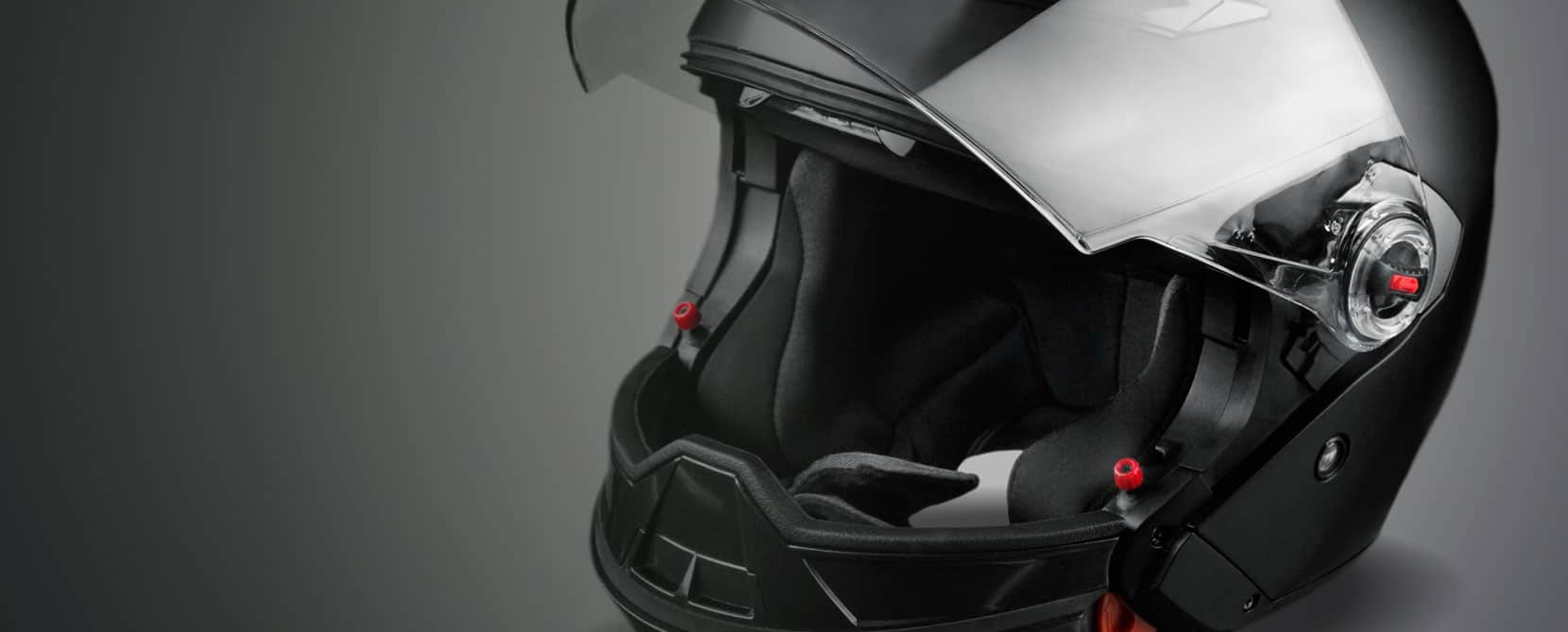Motorcyclists are incredibly vulnerable to life-changing and fatal injuries if they are involved in a crash. Studies have shown that certain safety features, including helmets, can significantly reduce the number of motorcycle fatalities.
At least 19 states, including California, have passed mandatory motorcycle helmet laws in an effort to protect riders. In California, anyone who rides on a motorcycle or motorized bike is required to wear a federally-approved helmet.
Helmets Save Lives
Motorcyclists who wear helmets while riding are much less likely to suffer a catastrophic or fatal injury if they are involved in a crash. According to the CDC, wearing a helmet reduces the risk of suffering a serious head injury in an accident by nearly 70 percent.
The risk of death decreases by approximately 37 percent when a rider wears a safety helmet. In 2015, helmets were instrumental in saving more than 1,770 motorcyclists’ lives. Studies estimate that more than 700 motorcycle accident deaths could have been avoided if riders had been wearing helmets.
History of California’s Helmet Law
In 1992, California became one of a few states to require anyone riding on a motorcycle or motorized bike to wear a helmet. While many states with helmet laws limit helmet requirements to children and teenagers, California’s law mandates helmet use by everyone.
It did not take long to see the positive effects of California’s mandatory helmet law. One year later, the number of motorcycle deaths reported in the state had dropped by a staggering 37.5 percent.
California Requires All Riders to Wear a Helmet
California’s mandatory helmet law, as written in Vehicle Code Section 27803, states that it is “unlawful to operate a motorcycle, motor-driven cycle, or motorized bicycle if the driver or any passenger is not wearing a safety helmet.”
As you can see, the state’s helmet law is rather broad. It not only requires the person operating the motorcycle to wear a helmet, but also any passengers who are on the vehicle.
The law also extends beyond motorcycles, explicitly including all motorized bicycles and motor-driving cycles in its definition. This helps to ensure that anyone who is vulnerable to suffering a catastrophic or fatal injury is protected.
What is a Safety Helmet?
So, California requires all motorcyclists and passengers to wear a safety helmet. What kind of helmet satisfies the state’s helmet law? Vehicle Code Section 27802 explains that the state has the right to establish safety specifications and standards for all helmets “offered for sale, or sold, for use by drivers and passengers.”
At the very least, these standards will comply with safety regulations established by the federal government.
Regulations provided by the Department of Transportation and National Highway Traffic Safety Administration outline the following minimum requirements for motorcycle safety helmets:
Helmet Weight: Helmets meeting minimum requirements should weight approximately three pounds.
Sturdy, Riveted Chin Straps: Helmets must have a chin strap that is attached using sturdy rivets.
Inner Liner: Helmets must have firm polystyrene foam liner approximately 1-inch thick lining the inside of the device.
Limited Protrusions: Helmets may not have any design features or functions that protrude more than two-tenths of an inch from the surface. Visor fasteners are fine, while spikes and other decorative features are prohibited.
Helmets that meet federal regulation standards can be identified by a DOT sticker. California riders are encouraged to affix this sticker to their helmet to help law enforcement identify appropriate helmets.
What Does It Mean to Wear a Helmet?
Does simply placing any helmet on your head satisfy the legal requirement of “wearing” a safety helmet? No. California law explicitly requires that a person will only be considered to be wearing a helmet if:
- The helmet’s straps are fastened
- The helmet fits the person’s head securely, and
- There is no lateral or vertical movement when it is fastened.
So, wearing a helmet but failing to fasten the chin straps or wearing a helmet that is far too large are violations of California law.
What Happens If I Don’t Wear a Helmet in California?
Potential Criminal Consequences
It is illegal in the state of California to ride on a motorcycle without an acceptable safety helmet. The California Highway Patrol explains that not wearing a helmet is an immediate safety hazard, punishable by a fine of up to $250 and/or one year of probation.
Civil Consequences of Not Wearing a Helmet
Not wearing a helmet on a motorcycle can have much more devastating legal consequences than a minor fine and probation. If you are injured in an accident and were not wearing a helmet at the time, your ability to recover monetary damages could be compromised.
Accident victims who contribute to their own accident or injury are not barred from recovering damages, as long as another person is also to blame. However, the amount of damages you can recover is reduced by your own degree of fault.
For example, let’s say that Mike was injured in a Los Angeles motorcycle accident when he was struck by a distracted driver. Mike’s helmet was not fastened at the time of the crash and flew off on impact. He suffered catastrophic injuries, including quadriplegia, as a result of the crash.
If he had been wearing his helmet, his injuries would have likely been much less severe. Both he and the distracted driver are determined to be 50 percent responsible for his injuries. If Mike suffered $100,000 in damages, he would only be entitled to recover $50,000 from the other driver.
Need More Assistance?
Have you been involved in a California motorcycle accident? Contact Citywide Law Group to learn about the benefits of filing a personal injury lawsuit. Sherwin Arzani will fight to help you recover the compensation you deserve. Call today to request a free consultation.





